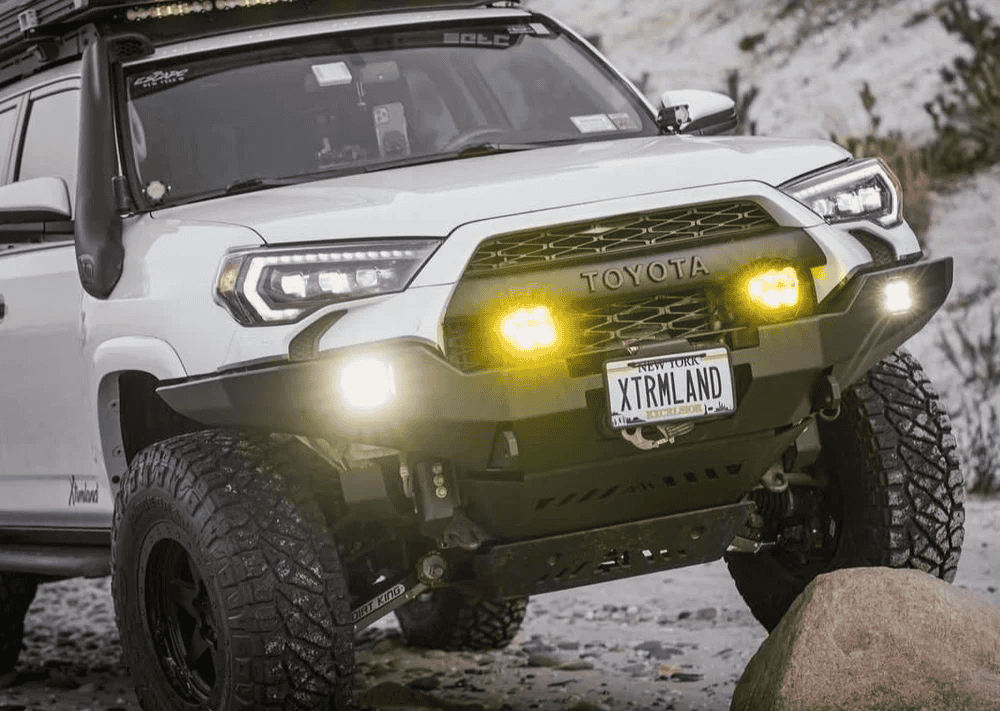Overland Vehicles

Choosing the right overland platform begins with honest trip planning. Define your driving mix between pavement, graded gravel, technical trails, and sand or snow. Note your trip length, from long weekends to multi week loops, and how often you will travel. Decide if you will camp simply or prefer a comfortable cabin with climate control, storage, and cooking space. These preferences shape vehicle class, equipment, and budget long before the first part is installed.
If you expect tight forest roads, ruts, and shelf roads, prioritize a shorter wheelbase, strong skid protection, and good approach and departure angles. Wide open desert favors stable suspension, strong cooling, and tire protection. Coastal and mountain climates add corrosion and altitude to the equation, which may influence powertrain and maintenance planning.
Extended routes call for consistent fuel economy and extra capacity, whether by auxiliary tank or safe jerry storage. Electricity needs for fridges, lights, and communications should be mapped to daily watt hours and solar or alternator charging plans. A clear range target helps prevent overweight builds.
Cab comfort matters on long days. Supportive seats, quiet cabins, and good HVAC reduce fatigue. Pair comfort with recovery basics that fit your solo or convoy style, including traction boards, a rated recovery strap, and a plan for tire repair. Capability means little without a path back to the road.
Different platforms bring different strengths. Evaluate with real numbers, not only reputation, and verify the payload and towing ratings before adding gear.
Compact platforms shine on light trails and long highway stretches. They are easy to park, quiet, and efficient. Their limits show in payload and ground clearance, which cap water, spare tires, and armor. For minimalist travel with one or two people, they can be an elegant solution.
Mid size options balance maneuverability and strength. Frames handle armor, recovery points, and moderate payloads for water, food, and a compact sleeping setup. Consider axle ratios, locker availability, and cooling packages if you plan long climbs with weight. A canopy or topper can secure gear while keeping mass low and forward.
Full size platforms carry real weight, support large electrical systems, and offer living space that turns bad weather into a non issue. The tradeoffs include size on tight trails, turning radius, and higher curb weight that demands quality brakes and tires. If you value comfort, storage, and multi season travel, this category is worth a hard look.
Paper specs reveal how a platform will behave once loaded. Weight, geometry, and support network determine long term satisfaction more than any single feature.
Calculate total payload by adding passengers, water, fuel, recovery gear, tools, and accessories. Plan to stay comfortably under the rating to preserve ride, braking, and reliability. Keep heavy mass low and near the center of the vehicle to reduce sway and stress on components. A light, balanced build drives better everywhere.
Wheelbase shapes breakover clearance and how easily you pivot on tight switchbacks. Approach and departure angles tell you how soon bumpers will touch. If you want access to rocky or rutted routes, geometry can matter more than raw power.
Overland travel often crosses state and country lines. Favor platforms with wide dealer networks, proven engines and transmissions, and readily available wear parts like belts, filters, and brake pads. Reliability on the road is both a design choice and a platform advantage.
A van is not just a road trip shell. With the right components, it becomes a stable, insulated, weatherproof platform with standing room and secure storage. Look at roof height, drive options, and axle ratings. Air conditioning at camp, real power storage, and safe cargo tie downs create a calm daily rhythm that pays off on long routes. If your trips demand work and travel in one, a van based platform can be a clear winner.
Suspension should match your final weight, not a guess. Progressive springs and quality dampers maintain control over washboards and fully loaded climbs. Tire choice affects traction, noise, and puncture resistance. Gearing that aligns with tire size keeps drivability intact and protects the powertrain. Build around the load and the miles you expect to cover.
If this framework clarified your direction, the next step is translating it into a real platform with smart packaging, safe wiring, and tuned suspension. For a guided path from concept to trail ready, explore Overland Rigs. Ready to tailor a system around your payload and route style, see Custom Overland Upfit. Want to learn what sets our process and craftsmanship apart, visit Why Choose OZK Customs.
We listen first, then engineer a platform that fits your terrain, weight targets, and comfort goals. From power systems and cabinetry to armor and lighting, our team builds durable, quiet, and serviceable rigs that feel composed on highway and confident on trail. Tell us how far you plan to roam and what you need to carry, and we will align the platform and components to match.
Ready for a build that matches your trips and terrain? Share your goals, and our team will translate them into a capable, reliable rig with dialed power, storage, and ride quality. Tell us where you are headed and we will map a platform and upfit that gets you there without compromise.
ADDRESS:
6159 E Huntsville Rd, Fayetteville, AR 72701
PHONE:
(479) 326-9200
EMAIL:
info@ozkvans.com